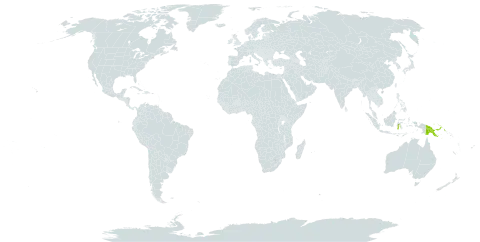Treelet or tree, up to 15(-30?) m, sometimes with low stiltroots. Stipules linguiform, 1½-4 by 1½-2½ mm, sometimes shortly ciliate. Leaves obovate-oblong to-lanceolate, 10-30 by 2½-10 cm, rounded or somewhat acuminate at apex, ± tape-ring at base, margins ± involute, chartaceous, nerves 1-1½ mm apart; surface of dried leaves very finely reticulate by protruding intercellular walls of epidermal cells, giving an impression of striation parallel to the nerves; petiole 1½-6 cm. Inflorescences 10-25 cm; peduncle 2-5 mm Ø; pedicels filiform, 3-6 mm; bracts broadly lin-guiform, up to 2 mm long, sometimes shortly ciliate. Flowers bisexual, erect. Sepals elliptic to obovate, 3-6 by 1½-4 mm. Petals obovate, 4-8 by 2-5 mm. Outer staminodes 0-∞, linear, 1-1½ mm long; inner ones 15-25, linear to spatulate, 2½-5 mm long, with 1 distinct nerve. Filaments 1-2 mm; anthers 1¼-2 by c.½ mm, connective distinctly protruding. Ovary subovoid, 1½-3 by 1¼-2 mm, papillate, sometimes with a few glandular-capitate hairs; style 1½-3 mm, growing in fruit, widening into the ovary; stigma small, capitate or punctiform. Fruit fusiform, up to 2½ by ½ cm, acuminate. Seeds c. ¾ by ¼ mm, with c. 3 mm long, slender wings.
From sea-level up to 2000 m, in primary and secondary forests, on level land to steep slopes, sometimes near river-banks or in swampy localities; on clay or more sandy or rocky soils. Probably not uncommon locally, but rarely flowering.
